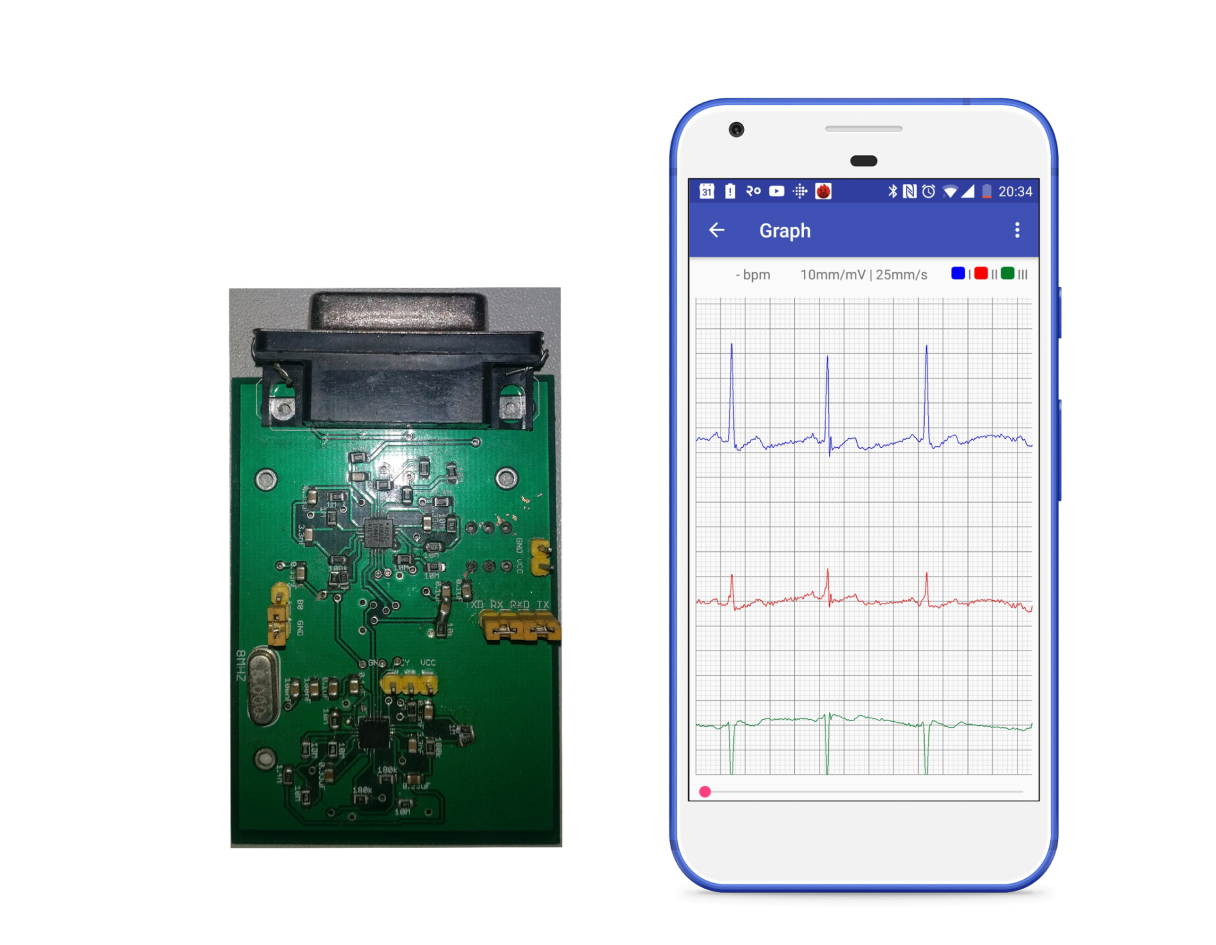
The lack of doctors available in primary healthcare centers in rural villages in Nepal causes a great deal of stress to the locals receiving care. They often can’t get the most straightforward diagnosis they need from the center. Due to budget constraints of a developing nation, the government can’t procure an expensive intelligent medical device, and the attendants present aren’t qualified to read the reports from medical devices.
We wanted to contribute to solving this lack of smart medical devices to some extent. We started with a vision to create a smart ECG device that would cost less than $100 and be accurate within acceptable industry standards so that developing nations such as Nepal would be able to afford it.
The first device that we have created is a three-lead ECG device that can pair with Android devices and display the ECG in real time. The device runs on 2 AA batteries, which will typically last above 20 hours if operated continuously.
Architecture
The first prototype that we did for ECG used AD8232 chip to process and digitize the signals from the ECG leads. STM32 microcontroller handled the implementation of digital filters and other logical processing. The Bluetooth controller HC05 was responsible for taking all of the data from the microcontroller and transmitting it to the mobile device. This prototype cleared the testing criteria from the Association for the Advancement of Medical Instrumentation (AAMI) from their ANSI/AAMI/IEC 60601-2-47:2012/(R)2016 document. The first prototype is able to identify some of the simpler irregular rhythms seen in ECGs and display that information on the accompanying mobile device.
The first prototype has its drawbacks in the sense that it uses components that could be replaced with smaller components to make it even more lightweight and efficient. The Bluetooth module HC05 doesn’t support iOS devices. The second prototype that we are currently working on is going to resolve these issues. We replaced HC05 and STM32 with a BLE module that can execute instructions and transmit data with a single module thus saving space on the PCB and making it more efficient. We also changed the port to connect to a 4-lead ECG instead of a 10-lead in the first prototype which made the device more portable. The use of BLE will also mean that both iOS and Android devices will be able to connect to this version of the device.
Tools Used

 +977-01-5912344
+977-01-5912344